During October, Editor in Chief Peter Tyson accompanied 19 adventurous skygazers on a 12-day expedition to Chile — the “astronomy capital of the world” — for a tour of breathtaking landscapes and the magnificent southern sky.
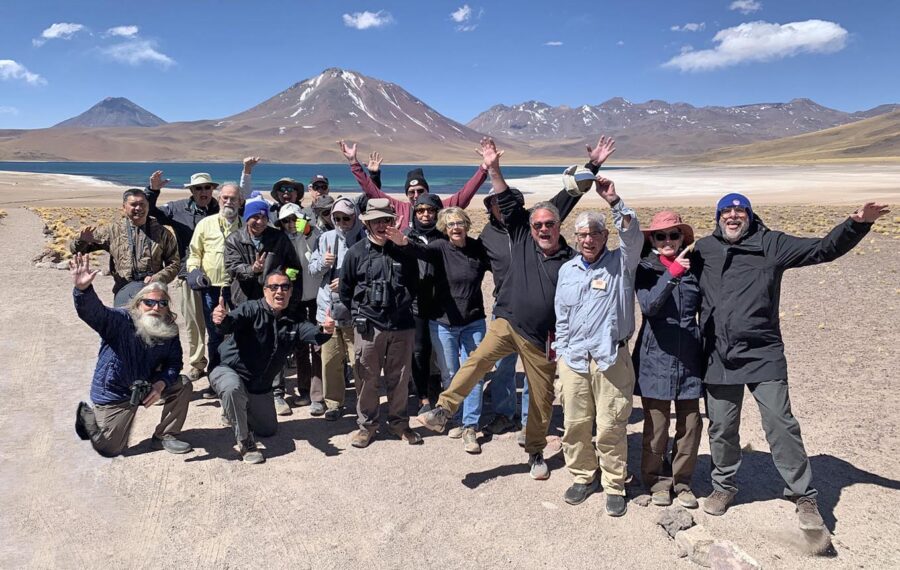
Peter Tyson / Sky & Telescope
On a Sky & Telescope astronomy tour, there’s always an initial period of adjustment, in a reinvigorating way. You’re traveling with people you’ve just met, perhaps in a country new to you, with language that’s not your native tongue, food you’re not used to, and customs you’re not familiar with.
As our group of amateur astronomer-adventurers discovered last month on S&T’s observatories tour, Chile accentuates that need to get your bearings. This is particularly true for those coming from the Northern Hemisphere, as everything is “backwards” or “upside-down” in the Southern. While leaves are turning where I come from in Boston, October for Chileans is springtime, and the air around Santiago, where we began our tour, was filled with vigorous birdsong and the scent of blooming flowers.
Stargazing
More pointedly for astronomers who live in the north, the night sky is reversed from what they’re used to. This instantly became clear on the first of three stargazing nights we enjoyed in Chile. As soon as it got fully dark at the El Pangue Observatory outside La Serena, I for one sought out the Andromeda Galaxy with the naked eye. My usual Northern Hemisphere star-hop from the Great Square of Pegasus — three stars over from the lower left corner then up three stars to the galaxy — was reversed: start at the Square’s lower right corner, then over to the right and down.
Further novelties abounded in our stargazing: a raft of constellations we were less familiar with, including the tiny Delphinus, Apus, and Musca. Night skies so much darker than the often light-polluted firmament most of us usually face back home that you couldn’t see someone right in front of you unless they wore something reflective, and surrounding hills appeared black while the sky just above them was gray with light from all the unimpeded cosmic photons. In the dry desert air, the only clouds were the Large and Small Magellanic ones and the Milky Way, and they blazed brighter than some of us had ever seen them up north.
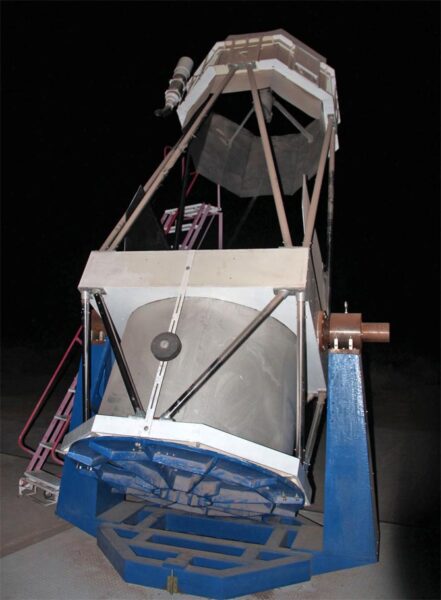
Peter Tyson / Sky & Telescope
Both at El Pangue and later at the SPACE private observatory near San Pedro de Atacama in the north of Chile, we observed objects we’d either never seen before or never in such a spectacular way. In 16-inch and 25-inch scopes at El Pangue, we enjoyed the usual Southern Hemisphere standouts, including the Tarantula Nebula and 47 Tucanae. (We also saw these later in 29-inch and 45-inch scopes at SPACE, savoring the different views each scope provided.) But we also observed more challenging targets, including the Sculptor Galaxy (NGC 253) and the Triangulum Galaxy (M33).
Some of the objects that most appealed to our group — eliciting regular whispers of “Oh my goodness” and “Wow” — included the Grus Quartet (NGCs 7582, 7590, 7599, 7552), with all but NGC 7552 appearing together in the field of view. Neptune, with its blue hue deeply distinct in the pitch darkness. The Veil Nebula, which one of our group, John Byrum, raved about in observing notes he shared with me: “Have never seen it as sharply contrasted, bright, and detailed” (agreed). The Skull Nebula (NGC 246) in Cetus. The Peacock Globular (NGC 6752) in Pavo, which looked like a brittle star with multiple arms. For many, these nights of stargazing were the best they’d ever enjoyed.
Observatories
The professional observatories we visited required their own acclimatization, and not just for altitude, for they were orders of magnitude larger and more sophisticated than the backyard scopes many in our party have at home.
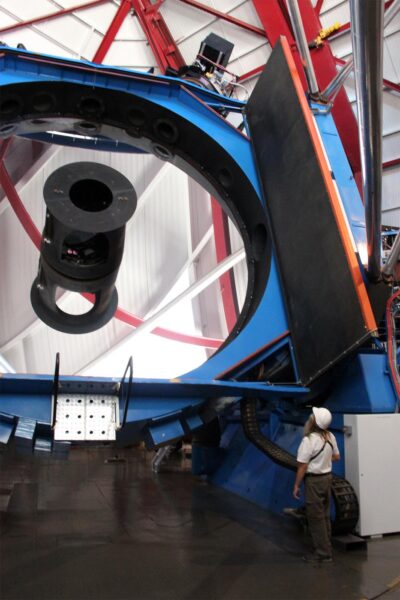
Peter Tyson / Sky & Telescope
At Las Campanas Observatory, we toured one of its two 6.5-meter telescopes, while at Paranal Observatory, we got a close look at one of the four 8.2-meter scopes. The latter visit was particularly illuminating, with knowledgeable guides providing our astronomy-savvy group with rich details and wide access. We even got to watch the great Antu 8.2-meter scope rotate during a test. The movement was barely audible, just a slight whoosh, a testament to the extremely advanced design and engineering that went into these phenomenal instruments.
Our 20-member Sky & Telescope party was the first tour group allowed into both these observatories since before the COVID-19 pandemic began (though Paranal has had public visit days since May). That was gratifying, though we were disappointed that lingering pandemic restrictions kept us from visiting the Atacama Large Millimeter/submillimeter Array (ALMA) and Cerro Pachón, with its Gemini South and Southern Astrophysical Research (SOAR) telescopes (and Vera C. Rubin Observatory under construction). From a distance, we did see the mountaintop construction sites of the Giant Magellan Telescope and the Extremely Large Telescope. One guide said, “You’ll just have to come back when they’re done for before-and-after photos!”
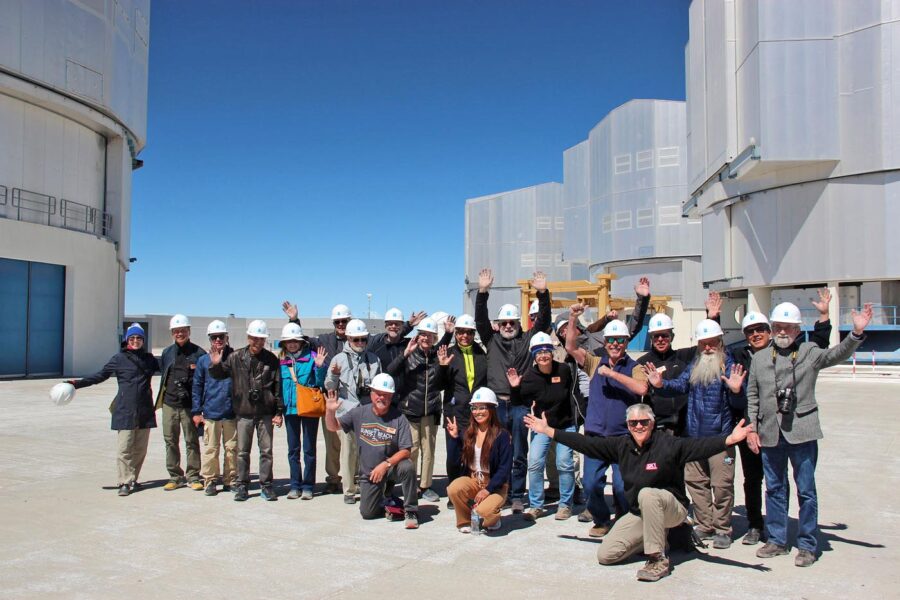
Peter Tyson / Sky & Telescope
Atacama Desert
While just one of many places we visited in the Atacama Desert, the Paranal Observatory exemplified many of the unique aspects of the world’s driest desert, which required its own acclimation. While only 12 kilometers from the Pacific Ocean, the 2,635-meter (8,600-foot) site of the observatory provides some of the finest stargazing in the world, thanks to an atmospheric inversion that keeps clouds and their moisture safely at or near sea level far below.
From the observatory’s hilltop, there’s not a tree in sight, except for the few planted (and carefully tended) at the site itself. That’s true for hundreds of kilometers around. The landscape around Paranal looks like Mars, with red, iron-rich soil blanketing rounded ridges. The wildlife we saw near and far from Paranal differed from what most of us were used to as well: guanacos and llamas, rheas and Andean gulls, plus wild burros descended from those used by Chilean copper miners decades ago. Everywhere we traveled in this ultra-narrow country, we could often see both the ocean and the soaring Andes to either side.
Readjustments? Bring ‘em on.
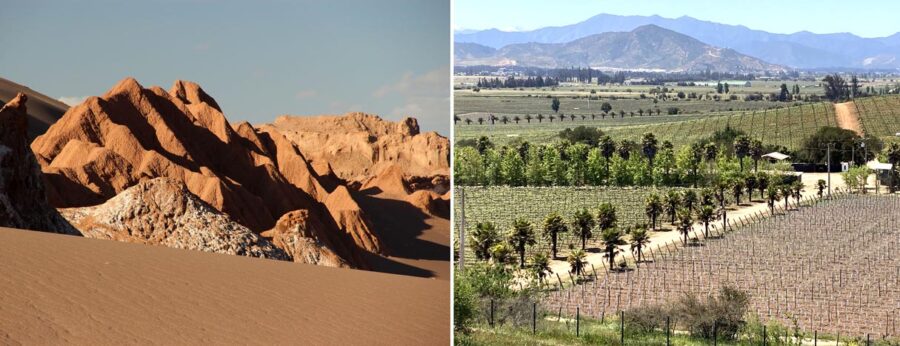
Peter Tyson / Sky & Telescope
| Sky & Telescope’s growing portfolio of astronomically-themed tours offers something for everyone — from eclipse viewing in the Yucatán to a “skies & sights” expedition to the Hawaiian Islands. Check out these and other upcoming tours at skyandtelescope.org/tours. |
 1
1
Comments
OwlEye
November 8, 2022 at 12:52 pm
Sounds wonderful!! A place I have read about for decades, and plan to have an observatory there one Day when all things have been made new!
DZ
You must be logged in to post a comment.
You must be logged in to post a comment.